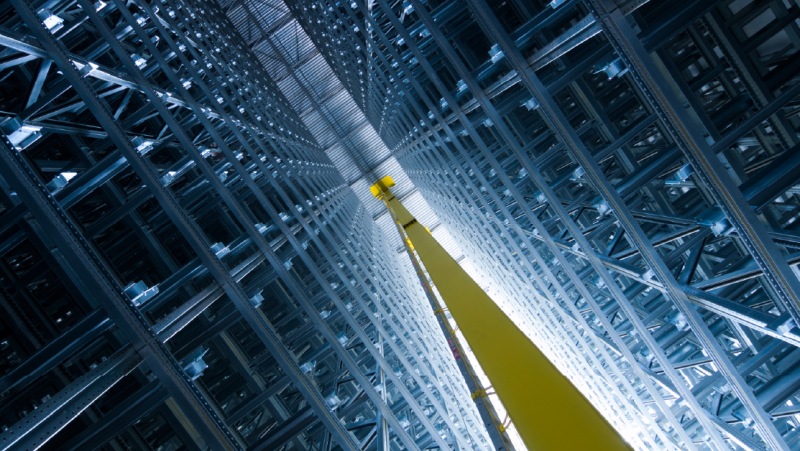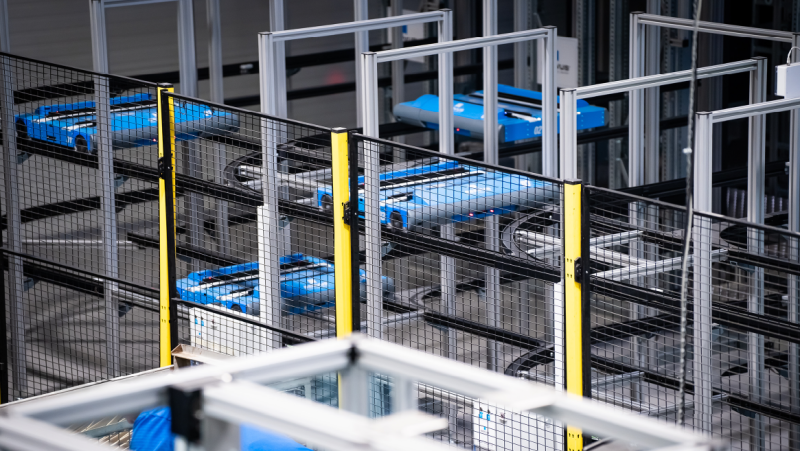Digitalisation goes hand in hand with automation. And it can bring companies durability and flexibility.
- Automation
- Interview
Projects aiming to automate logistics tend to be a major challenge for companies. In this interview with Aimtec co-founder Roman Žák, we discussed the most common errors one encounters in projects like these – as well as how automation relates to digitalisation.
Automation has become practically a must today. In what direction do the first steps of companies that want to automate usually lead?
We’ve found that customers who are just starting out don’t think much about systems. They always buy hardware first. They acquire a scanner or a semi-automatic VNA, but then they say: Now what will I do with this? How will I verify my scanned barcodes? Or: how will I optimise the movements of my expensive VNA? Suddenly after several trials and errors they find they need not just physical technologies but, above all, a smart system. Automation won’t come all on its own through autonomous logistics robots. You shouldn’t neglect that your whole warehouse or production hall, technologies, processes and workers have to be involved and integrated into your firm’s workings. Aimtec is a partner for precisely these aims.
So how can you squeeze the most out of automation? Can’t you focus on just the technologies?
Today, no automation solution that runs as a free-standing island in a company will add the same sort of value as it could after integration into their overall processes and functioning. Only then will its benefits escalate. When a client buys a semi-automatic warehouse, and with it a few conveyors, and outfits their hall with logistics trains, we can synchronise and optimise all these technologies based on the consumption in their production hall. We ensure that the warehouse loads the right handling units onto the conveyors that carry it all off. Then all that’s left is for the train to come; its manipulator takes and loads the goods, and the train goes to production. All these little activities run correctly, automatically and on time. Components go where they should. Besides being able to initiate and mutually integrate these systems, we can also devise the whole process and drive the whole project to fit it into the timeline – and into a budget the client can pay, with the quality they need.
In Aimtec’s view, what’s the relationship between digitalisation and automation?
Aimtec primarily does the digitalisation. We help our customers to digitalise their business activities, and this has a simple goal: they’ll be more flexible and able to maintain high quality. For example, we can increase the flows of goods and products through a firm – specifically its manufacturing/planning – without their having to add new machines and people. We can help them to reduce their production costs so they’ll be competitive. By digitalising and deploying systems such as SAP, DCIx and Asprova, as well as electronic communication and integration, we help them to succeed and compete. Our giant know-how here is that we know how to integrate automation technologies and incorporate them into digitalisation. Another fundamental strategy for us is long-term investment into internal systems, enabling us to automate and digitalise our own project deliveries as well. This is what we call digital delivery today.
Remote delivery is one of today’s trends, as is personalisation. To what extent can Aimtec adapt its products to customer requirements?
Most products, including the Asprova and SAP superstructures, are in-house – that is, they’re really ours. That lets us approach the customer’s real needs unfettered and in detail and reflect them in our applications’ configurations or their actual code, which I see as another major market advantage. So our products respond to what the market truly wants today; we’re not divorced from it.
What’s the most common automation myth that you have to overcome?
Definitely the most common one is the claim that automation serves for layoffs. The dominant notion in society is that when you put a robot somewhere, that means the person who worked there before automatically loses their job. But in reality, automation helps them. It removes the routine, the boring, tough or stressful work. It frees a person’s hands for activities with greater added value. No matter whether that means imagining how the whole process can work better, or being able to work more stations. Even at big companies like BMW, people specialised this way gain opportunities for further personal growth. Because they have this one gift: they’re the ones who know the given process best. Nobody knows it better than someone who previously performed the robot-replaced activity by hand. These people are the best operators and key users of the systems we digitalise and automate. At BMW, for example, they work on collision measures and teach the robots new things, because nobody else has their experience. That’s the healthy view of automation. On the other hand, it’s naturally true that automation and digitalisation save on jobs… but in a different sense. Even before the pandemic, we were facing a different problem in logistics – it was harder and harder to find good people for certain manufacturing jobs. Precisely these roles will be replaced by robots in future, and they’ll fill positions that may otherwise have simply lay empty.
Currently, fully automated warehouses are what we’d think of as the apex of automation technology. Is there any space at all for advancement? What will be the next revolution in logistics and manufacturing?
In my opinion, AIVs – Autonomous Intelligent Vehicles – have a huge future, because they can fundamentally change not only logistics, but manufacturing too. Today, manufacturing and automation are tightly bound by production lines that are unchangeable. If anything stops along the line, that can shut the whole line down. The system is very sensitive towards errors and complications, creating major demands for a perfectly working supply chain that prevents any stoppages. This new concept includes AIV robots that could transport products among operations fully flexibly, thus changing the game for the manufacturing process. Skipping a defective part, quickly tweaking production. That would give manufacturing complete flexibility. Individual operations won’t be linked by the line; instead, you’ll be able to freely program them, and thereby products’ movements.
Share article
Top stories from logistics, production and IT.
Subscribe to Aimtec Insights
By registering, you agree to the processing of your personal data by Aimtec as described in the Privacy policy.
Get top stories and articles
from Logistics, Production and IT.
Subscribe to Aimtec Insights
By registering, you agree to the processing of your personal data by Aimtec as described in the Privacy policy.







